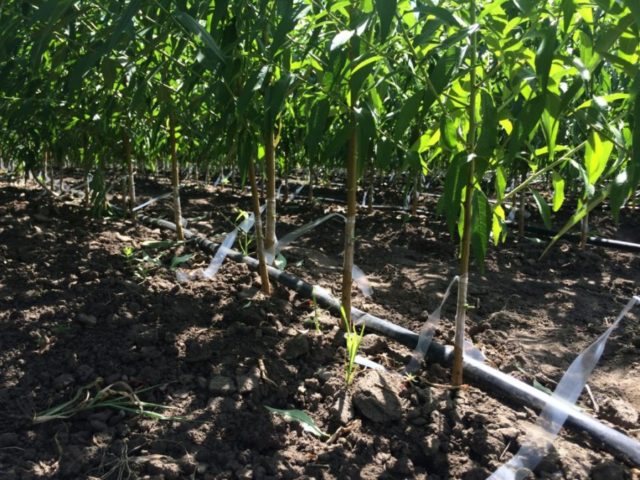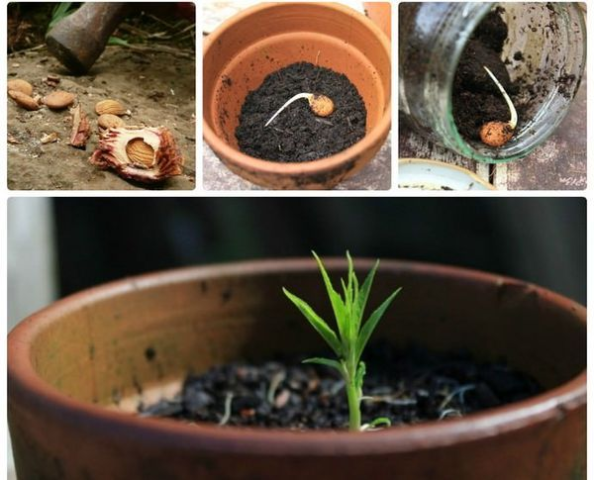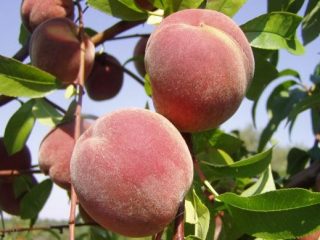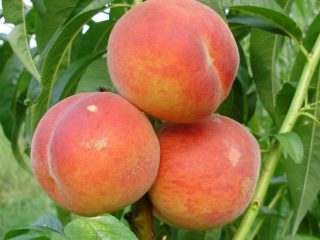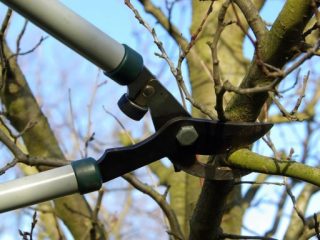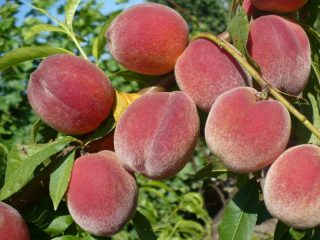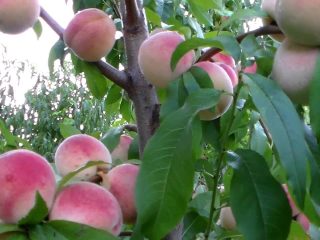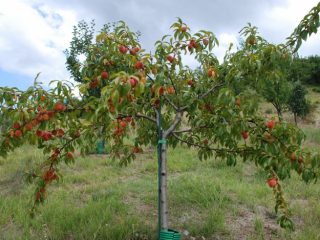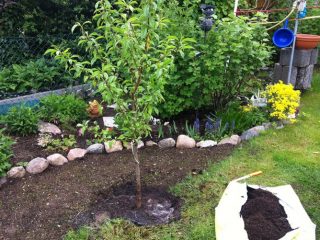Content
Among the huge number of varieties and varieties of peach, flat fruits stand out. Fig peach is not as common as other varieties, but is still popular among gardeners. If you care for it properly and choose the right variety, you can please the whole family and neighbors with beautiful and tasty fruits.
Origin of the Fig Peach
This exotic fruit was brought to Europe from China back in the 16th century. This was done by missionaries who began to grow this plant in Europe. Already at the end of the 16th century, the fig peach appeared in Russia.
The homeland of the fig peach, which is shown in the photo, is considered to be China and the eastern regions of the Asian republics. That is why in everyday life this fruit is often called the Chinese turnip.
General description of fig peach
The flat peach fig plant belongs to the Rosaceae family.The fruits superficially resemble figs, but it is impossible to baptize these two plants with each other, and therefore the similarity is only external.
The fruit of the fig peach is brightly colored in yellow and orange. The fluffiness of the fruit is slightly less than that of most peach varieties, but it is not naked like a nectarine. A peach crossed with a fig is called a fairy tale because no such fruit exists. It received its name solely because of its shape, although many mistakenly think differently. But it is important to remember that a hybrid of peach and fig cannot occur in nature.
This type of fruit is considered completely domestic and is not found in the wild. The taste qualities are very pleasing to gardeners, since, unlike most of its relatives, the Fergana peach has a stable taste both under the skin and near the pit. The fruits weigh up to 140 grams and are up to 7 centimeters in diameter.
Where do fig peaches grow?
This is a sun-loving tree, and therefore prefers the southern regions. Most often, fig peaches can be found in Central Asia, China, and in Russia - in Transcaucasia in the southern regions of the country.
Most often, if grapes grow well in the region, then the fig peach will take root well.
The best varieties of fig peach
There are several varieties of this fruit. The most popular varieties:
- Saturn - a beautiful peach with a red blush.
- Nikitsky - a small tree with large fruits.
- Vladimir - light large fruits.
- Columnar - early variety.
Columnar fig peach
This variety is characterized by low tree growth and early fruiting. The fruits of the Columnar variety are deep red in color and their weight reaches 150 grams.The crown of trees of this variety is similar to a cylinder, therefore it is often used as an ornamental plant.
Peach fig Saturn
Another early variety of Fergana peach. The crown of the tree is very spreading, and therefore the plant looks gorgeous in appearance. The fruits are slightly smaller than the previous specimen and weigh 100 grams. When ripe, the fruit has a yellow tint with light pink sides. The variety is frost-resistant and tolerates transportation well. Fig peach Saturn has a large number of positive reviews from experienced gardeners, therefore it is considered the most popular variety.
Fig peach Belmondo
Differs in late flowering. The fruits ripen in the second half of August. The taste of the fruit is dessert, perfect for lovers of sweets. The fruit has slight pubescence. The pulp of the fruit has a bright yellow tint. The tree of this variety is small in stature, but with a spreading crown. According to the description of the Belmondo variety, fig peach looks great and at the same time has a delicate taste.
Fig peach Vladimir
This variety is not afraid of most peach diseases. The tree is distinguished by its medium spreading crown and resistance to frost. The fruits reach 180 grams. These are quite large fruits with delicate cream-colored pulp. The skin is light in color with light red barrels.
Fig peach Nikitsky
The best option for growing in Russia. The weight of the fetus reaches 120 grams. Very often, due to its low growth, it is considered not a tree, but a shrub. Suitable for growing in harsh climates. The fruits have a reddish tint, and their flesh is cream-colored.The Nikitsky Ploskiy fig peach is the hardiest in terms of characteristics and is therefore loved by gardeners in the southern regions of our country.
Growing Fig Peach
To grow this fruit you need a lot of sun. This must be taken into account when choosing a location. Caring for peach, as well as choosing a seedling, are important for obtaining tasty and large fruits. There are several basic rules for the agricultural technology of this tree.
Site selection and soil preparation
The optimal soil for growing a fruit tree of this variety is loam and black soil. The place should be well lit, but at the same time protected from the winds, since seedlings and adult plants of the Chinese fruit do not like windy places.
To prepare the soil, it is necessary to add manure in the fall and sprinkle it with about 20 cm of soil. The soil that is pulled out of the hole for the seedling must be mixed with compost.
Choosing a fig peach seedling
When choosing a seedling, you need to pay attention to the following indicators:
- Assess the condition of the root system. The roots of the seedling must be undamaged, dry, and without signs of rot.
- The optimal age of the seedling is 1 year.
- The bark of the seedling should be green on the inside and look fresh.
After selecting a seedling, you can prepare the soil and plant it in the chosen location.
Only in this case is there a guarantee of getting a healthy and strong tree with tasty and tender fruits.
Planting fig peach
Planting must be done in the spring, since in the fall the seedling may not take root and freeze during the winter, especially if the winter is harsh.If planting is carried out in the fall, then the seedling should be covered as best as possible so that it survives until spring and is not damaged.
A hole for seedlings is dug 50 cm deep, 50 cm wide and 50 cm long. The necessary fertilizers should be poured into the bottom. Then lower the seedling and straighten its roots. Cover the top with soil, which is pre-mixed with compost. Pour 25 liters of water under the seedling.
The root collar should remain above the surface after planting. After the seedling is planted, the soil must be mulched. This needs to be done with leaves, or straw.
Aftercare
After planting, regardless of the variety, the fig peach requires plant care. It consists of watering, fertilizing, as well as annual pruning. Each of these events has its own characteristics.
Fig peach loves moist soil and during hot periods it needs to be watered once every two weeks. At the same time, a minimum of 20 liters of water is applied to each tree.
In autumn you need to apply potassium-phosphorus fertilizers. Spring feeding includes 50 g of urea and 75 g of saltpeter. This is applied under the tree one time. Once every three years it is necessary to add humus under the tree.
Pruning can be of two types - sanitary and formative. Sanitary pruning is carried out in order to remove all diseased and weakened shoots. The optimal time for pruning is March or early April, depending on the climate and weather conditions. When forming the crown, you should adhere to a cup-shaped shape. Experts recommend removing all shoots that are longer than 50 cm. To prevent the shoots from breaking under the weight of the fruit during fruiting, they need to be cut so that they are positioned horizontally. The optimal height of the tree is no more than one and a half meters.Fig peach grows well even in the Moscow region, if you choose the most frost-resistant variety and practice the right agricultural technology.
Fig peach is most often affected by powdery mildew, gray mold, and leaf curl. As a preventive measure, it is recommended to spray with a solution of copper sulfate. This procedure is carried out twice a year - in early spring and late autumn.
How to grow a fig peach from a pit
It is possible to grow tasty and aromatic fruit directly from the seed. A fig peach from a pit looks exactly the same as one grown from a seedling. The most important thing is to choose the right planting material. Ideally, this should not be a seed from a grafted tree, since a grafted peach will only produce a seed with the mother's characteristics. True, this will take a long time. First of all, you need to put the bone in a glass of water. The water must be changed every 12 hours and the bone should remain like this for 3-4 days.
After this, you need to remove the bone and dry it carefully. Break it with a hammer and remove the kernel from inside. It is better to store the kernel in a dark place, where at the proper temperature it can lie for a long time. The kernels must be planted in mid-autumn. In this case, the choice of location should be similar to when planting a seedling. Plant the kernel from the seed to a depth of 5 centimeters. In order for seedlings to appear and grow into a full-fledged tree, the following conditions must be met:
- The soil should consist of the following components: peat, humus, sand and leaf soil. Proportions 1:1:1:2.
- It is necessary to provide adequate lighting; if there is not enough sunlight, add ultraviolet light.
- Water the plant regularly; the soil should not be dry.But you shouldn’t overwater the plant either; if the soil is over-moistened, it can cause rot on the roots and subsequent problems with the growth and health of the tree.
- The optimal temperature is 15–20 °C.
Then place an inverted plastic bottle without a neck on top to create warm and comfortable conditions for the seed. After 3–4 months, the first shoots should appear.
Starting in March, seedlings need to be fed. This must be done every two weeks until September. Next year, fig peach from the pit can be planted for permanent residence.
You can start forming the crown at the moment when the peach fig tree is already 70 cm.
Conclusion
The fig peach is not just a beautiful tree, but also a very tasty fruit with a delicate taste. For lovers of sweets and experienced gardeners, having such a tree on your site is a holiday and an honor. But the plant requires proper care and competent agricultural technology. Only in this case will it be possible to obtain aromatic fruits of an unusual type. The peach variety must be selected depending on the climatic conditions where the garden crop is supposed to be grown. There are both earlier and later varieties, but on average the harvest is obtained by mid-August.



